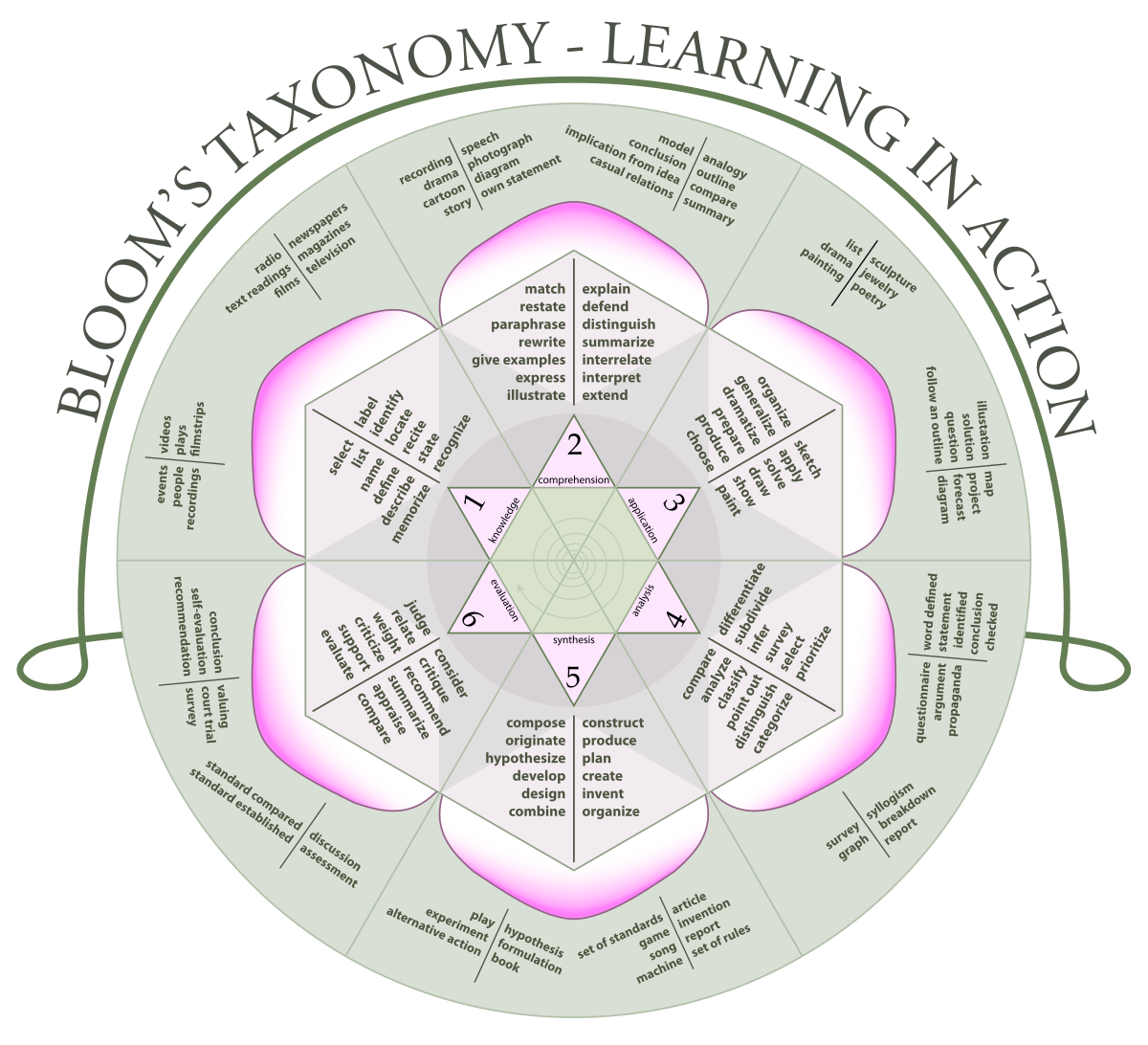
Learning new concepts and assimilating new skills are miracles, and teachers are miracle workers. The amount of time, thoughtfulness, and planning that goes into designing a single lesson plan is an extraordinary labor of love. That labor of love is instructional design in action.
What is instructional design?
Instructional design (ID) is “the systematic and reflective process of translating principles of learning and instruction into plans for instructional materials, activities, information resources, and evaluation.”
Instructional design is a professor spending tireless hours writing learning objectives, finding research articles, building case studies, creating activities, structuring projects, and designing authentic assessments.
"The best learning happens by design," said Ian Evenstar, CEO/Founder of UNINCORPORATED. "Instructional design is a combination of three primary domains: technology, instruction, and experience. At the intersection of these three, or the sweet spot is where optimal learning happens."
Curriculum Design
"Everyone loves learning, but not everyone loves school," says Curtis Wang, Senior Learning Scientist at UNINCORPORATED.
Instructional designers (IDs) work closely with professors and subject matter experts to organize a course into weekly classes and a progression of individual lessons to guide the student's learning.
"We live in a higher skills economy. The focus has shifted from acquiring knowledge to applying knowledge, which demands skills like creative thinking, strategic problem solving, negotiation, and creating cultures of collaboration. We must consider the unique priorities today's students bring into our classrooms. Whether it's to hone specific skills, mindsets, or build lasting partnerships with their peers, our goal is to facilitate deep learning in meaningful and effective ways."
What do instructional designers do?

Instructional design is a profession similar to eLearning design. Instructional designers work with faculty members in a variety of ways: they may be asked to develop courses from scratch, translate what is working in a traditional, instructor-led classroom to an online setting, or even translate courses into new languages.
IDs work with faculty members to define the learning objectives for each course and the lessons necessary to meet them, as well as the assessments and benchmarks that determine whether or not they’ve been effective.
UNINCORPORATED's Content Strategist, Brady Werkheiser says, "when designing content for students, always focus on their experience. IDs have to ask themselves, 'how can I take the pedagogy, instructional materials, and technology to create a learning experience that is transformational and enjoyable?'"
Instructional designers know the strengths and weaknesses of multiple eLearning architectures (e.g., receptive, directive, and guided discovery), learning strategies (authentic assessment, project-based learning, experiential learning, and gamification), and apply each strategy in the appropriate situation.
Learning Experience Design
Although complementary and interdependent, instructional design is not learning experience design (LXD).
Learning experience design focuses on what the student will experience (i.e., the look, feel, structure, and ways instruction is delivered), and instructional design is concerned with the pedagogy and assessment.
More important than the design of instructional materials is accessibility says, UN Design Director, Rebecca Koller, "Accessibility needs to be considered from the very beginning of a project. What good are well-designed course material and educational content if it is not functional, accessible, and inclusive for everyone?"
The Instructional Design Process
The industry-recognized instructional design process generally follows the ADDIE model, a 5-step methodology that includes: analysis, design, development, implementation, and evaluation.
1. Analysis
This initial step is based on identifying, understanding, and documenting who the primary students are, your instructional goals, objectives, learning constraints, timelines, and other considerations for the course.
2. Design
With a comprehensive understanding of your student, goals, and constraints, it's time to design the course to fulfill all of your parameters from the analysis phase.
The outcome for the design phase is a thorough and well-researched plan of all the learning objectives, exercises, evaluation instruments, content, user experience, and technology needs that will help students acquire learning.
Learning Objectives
 Let's imagine we were tasked with designing the course Instructional Design Foundations and Applications. To guide the creation of learning objectives, we refer to Bloom's Taxonomy, a framework that outlines six levels of cognitive engagement in learning activities.
Let's imagine we were tasked with designing the course Instructional Design Foundations and Applications. To guide the creation of learning objectives, we refer to Bloom's Taxonomy, a framework that outlines six levels of cognitive engagement in learning activities.
The six levels of engagement are 1.) remember, 2.) understand, 3.) apply, 4.) analyze, 5.) evaluate, and 6.) create with recalling simple knowledge at the bottom, making meaning in complex situations in the middle, and abstract thinking at the top.
When writing learning objectives, focus on the strength of the verb. For example, words like, "list," "explain," "show," "compare," "hypothesize," and "critique," increase in levels of cognitive engagement according to Bloom's Taxonomy from the lowest to the highest level of engagement. Ideally, you should balance activities across these six tiers.
Content Development
To support each learning objective, IDs will need to articulate, organize, and develop learning materials. Materials often included things like assigned readings, weekly presentations, recorded video lectures, and live lectures.
Content development also includes exercises and assessments to measure learning. For our hypothetical Instructional Design Course, a learning objective is to "describe the process of instructional design and instructional design models." For this objective, we might ask students to compare or critique different instructional design models, which map to Bloom's Taxonomy (level 4 & 6, respectively.)
User Experience Design

The last part of the design phase is the graphic, visual, technological, and experiential design of how content and instruction will be delivered. Most importantly, aim to design a consistent and cohesive experience by ensuring the higher education branding is uniform across all of your branded materials.
The best instructional design must also consider the best way to support the empathy of the student during the many different course interactions. To design around these considerations, building out an empathy map for your course will help you understand what your student is thinking, feeling, hearing, seeing, and doing. An empathy map will also encourage you to consider their "pains" (i.e., friction points and fears in their learning) and their "gains" (i.e., goals and needs in their learning).
For a tech perspective, Robert Johns, an Account Supervisor at UNINCORPORATED reminds universities to "implement technologies to support learning outcomes and prepare students to use them after graduation." One of our eLearning design principles is to not use technology for the sake of using technology. If you're unsure whether technology will benefit students, return to the learning objectives.
3. Develop
The development phase generally follows a standardized web process where developers configure the Learning Management System (LMS), assemble all of the assets, and integrate the technology.
Once everything is setup, the course goes through a revision cycle with the client. When it is approved by the client, it undergoes a final check for quality control to ensure functionality and uncover potential bugs.
4. Implement
Now it is time to onboard students, faculty members, and administrators to the newly developed platform.
Faculty and administrators should review the curriculum, learning outcomes, technology, and assessments. The goal is for the individuals facilitating the course to be comfortable using the platform to teach students.
Students should see how to use the tools required for their course, including how to find and submit assignments, view grades, complete assessments, contact faculty, and use any software or hardware tools.
5. Evaluate
The goal of the evaluation phase is to determine if students were able to achieve the educational goals, discover what changes would improve the overall experience and provide opportunities for users (students, faculty, and program administrators) to give feedback.
Download your complimentary Brand Manifesto Workbook today!









